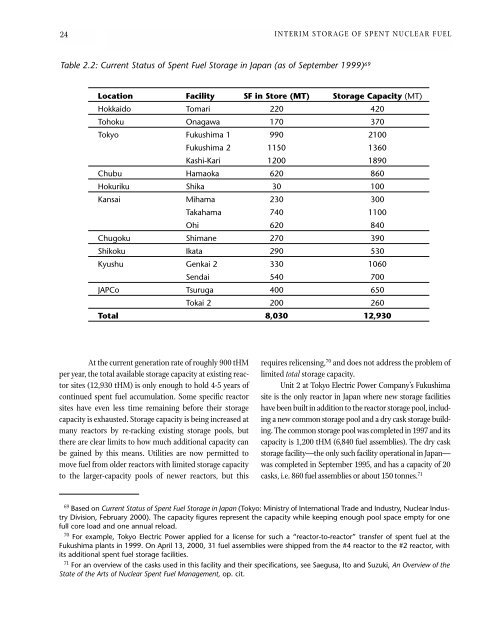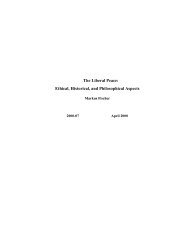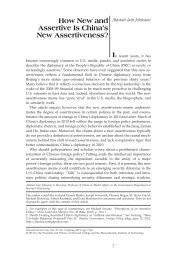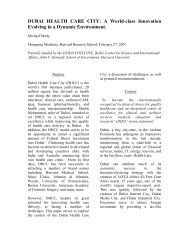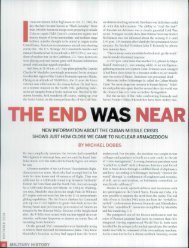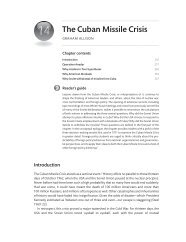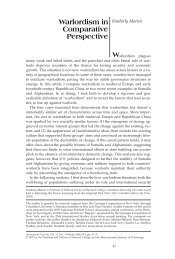Interim Storage of Spent Nuclear Fuel - Woods Hole Research Center
Interim Storage of Spent Nuclear Fuel - Woods Hole Research Center
Interim Storage of Spent Nuclear Fuel - Woods Hole Research Center
Create successful ePaper yourself
Turn your PDF publications into a flip-book with our unique Google optimized e-Paper software.
24<br />
At the current generation rate <strong>of</strong> roughly 900 tHM<br />
per year, the total available storage capacity at existing reactor<br />
sites (12,930 tHM) is only enough to hold 4-5 years <strong>of</strong><br />
continued spent fuel accumulation. Some specific reactor<br />
sites have even less time remaining before their storage<br />
capacity is exhausted. <strong>Storage</strong> capacity is being increased at<br />
many reactors by re-racking existing storage pools, but<br />
there are clear limits to how much additional capacity can<br />
be gained by this means. Utilities are now permitted to<br />
move fuel from older reactors with limited storage capacity<br />
to the larger-capacity pools <strong>of</strong> newer reactors, but this<br />
INTERIM STORAGE OF SPENT NUCLEAR FUEL<br />
Table 2.2: Current Status <strong>of</strong> <strong>Spent</strong> <strong>Fuel</strong> <strong>Storage</strong> in Japan (as <strong>of</strong> September 1999) 69<br />
Location Facility SF in Store (MT) <strong>Storage</strong> Capacity (MT)<br />
Hokkaido Tomari 220 420<br />
Tohoku Onagawa 170 370<br />
Tokyo Fukushima 1 990 2100<br />
Fukushima 2 1150 1360<br />
Kashi-Kari 1200 1890<br />
Chubu Hamaoka 620 860<br />
Hokuriku Shika 30 100<br />
Kansai Mihama 230 300<br />
Takahama 740 1100<br />
Ohi 620 840<br />
Chugoku Shimane 270 390<br />
Shikoku Ikata 290 530<br />
Kyushu Genkai 2 330 1060<br />
Sendai 540 700<br />
JAPCo Tsuruga 400 650<br />
Tokai 2 200 260<br />
Total 8,030 12,930<br />
requires relicensing, 70 and does not address the problem <strong>of</strong><br />
limited total storage capacity.<br />
Unit 2 at Tokyo Electric Power Company’s Fukushima<br />
site is the only reactor in Japan where new storage facilities<br />
have been built in addition to the reactor storage pool, including<br />
a new common storage pool and a dry cask storage building.<br />
The common storage pool was completed in 1997 and its<br />
capacity is 1,200 tHM (6,840 fuel assemblies). The dry cask<br />
storage facility—the only such facility operational in Japan—<br />
was completed in September 1995, and has a capacity <strong>of</strong> 20<br />
casks, i.e. 860 fuel assemblies or about 150 tonnes. 71<br />
69 Based on Current Status <strong>of</strong> <strong>Spent</strong> <strong>Fuel</strong> <strong>Storage</strong> in Japan (Tokyo: Ministry <strong>of</strong> International Trade and Industry, <strong>Nuclear</strong> Industry<br />
Division, February 2000). The capacity figures represent the capacity while keeping enough pool space empty for one<br />
full core load and one annual reload.<br />
70 For example, Tokyo Electric Power applied for a license for such a “reactor-to-reactor” transfer <strong>of</strong> spent fuel at the<br />
Fukushima plants in 1999. On April 13, 2000, 31 fuel assemblies were shipped from the #4 reactor to the #2 reactor, with<br />
its additional spent fuel storage facilities.<br />
71 For an overview <strong>of</strong> the casks used in this facility and their specifications, see Saegusa, Ito and Suzuki, An Overview <strong>of</strong> the<br />
State <strong>of</strong> the Arts <strong>of</strong> <strong>Nuclear</strong> <strong>Spent</strong> <strong>Fuel</strong> Management, op. cit.


